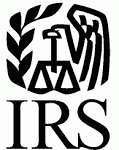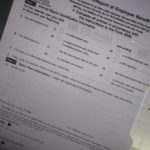 The Department of Labor’s final rules updating the procedures for disability claims goes into effect on April 2, 2018. This post summarizes the new rules; which plans are affected by the new rules; and the next steps affected plans should take.
The Department of Labor’s final rules updating the procedures for disability claims goes into effect on April 2, 2018. This post summarizes the new rules; which plans are affected by the new rules; and the next steps affected plans should take.
Affected Plans
The Claims Procedure Regulations at C.F.R. §2560.503-1 affect all ERISA Plans, including pension plans such as defined benefit and 401(k) plans, welfare benefit plans like medical and disability insurance plans. As a practical matter, the changes to the rules for disability claims only impacts plans that actually make disability determinations. Therefore, if your pension or 401(k) Plan relies on disability determinations made by a third party, like the Social Security Administration, you should not need to make any changes to your plan documents or your claims procedures as a result of the new rules.
Next Steps
Affected plans have until December 31, 2018 to adopt the necessary plan amendments, but the amendment will need to be effective, and Plans will need to comply with the revised rules, as of April 2, 2018. Affected Plans will also need to update their Summary Plan Descriptions to reflect the new rules.
Summary of the Changes
The new rules amend the claims procedure regulation at 29 C.F.R. §2560.503-1 for disability benefits to require that plans, plan fiduciaries, and insurance providers comply with additional procedural protections when dealing with disability benefit claimants. Specifically, the final rule includes the following changes in the requirements for the processing of claims and appeals for disability benefits:
- Basic Disclosure Requirements. Benefit denial notices must contain a more complete discussion of why the plan denied a claim and the standards used in making the decision. For example, the notices must include a discussion of the basis for disagreeing with a disability determination made by the Social Security Administration if presented by the claimant in support of his or her claim.
- Right to Claim File and Internal Protocols. Benefit denial notices must include a statement that the claimant is entitled to receive, upon request, the entire claim file and other relevant documents. Previously, this statement was required only in notices denying benefits on appeal. Benefit denial notices also have to include the internal rules, guidelines, protocols, standards or other similar criteria of the plan that were used in denying a claim or a statement that none were used. Previously, instead of including these internal rules and protocols, benefit denial notices have the option of including a statement that such rules and protocols were used in denying the claim and that a copy will be provided to the claimant upon request.
- Right to Review and Respond to New Information Before Final Decision. The new rule prohibits plans from denying benefits on appeal based on new or additional evidence or rationales that were not included when the benefit was denied at the claims stage, unless the claimant is given notice and a fair opportunity to respond.
- Avoiding Conflicts of Interest. Plans must ensure that disability benefit claims and appeals are adjudicated in a manner designed to ensure the independence and impartiality of the persons involved in making the decision. For example, a claims adjudicator or medical or vocational expert could not be hired, promoted, terminated or compensated based on the likelihood of the person denying benefit claims.
- Deemed Exhaustion of Claims and Appeal Processes. If plans do not adhere to all claims processing rules, the claimant is deemed to have exhausted the administrative remedies available under the plan, unless the violation was the result of a minor error and other specified conditions are met. If the claimant is deemed to have exhausted the administrative remedies available under the plan, the claim or appeal is deemed denied on review without the exercise of discretion by a fiduciary and the claimant may immediately pursue his or her claim in court. The revised rule also provides that the plan must treat a claim as re-filed on appeal upon the plan’s receipt of a court’s decision rejecting the claimant’s request for review.
- Certain Coverage Rescissions are Adverse Benefit Determinations Subject to the Claims Procedure Protections. Rescissions of coverage, including retroactive terminations due to alleged misrepresentation of fact (e.g. errors in the application for coverage) must be treated as adverse benefit determinations, thereby triggering the plan’s appeals procedures. Rescissions for non-payment of premiums are not covered by this provision.
- Notices Written in a Culturally and Linguistically Appropriate Manner. The final rule requires that benefit denial notices have to be provided in a culturally and linguistically appropriate manner in certain situations.


 The U.S. Department of Labor’s Employee Benefits Security Administration, the IRS, and the Pension Benefit Guaranty Corporation (PBGC) have releasedadvance informational copies of the
The U.S. Department of Labor’s Employee Benefits Security Administration, the IRS, and the Pension Benefit Guaranty Corporation (PBGC) have releasedadvance informational copies of the